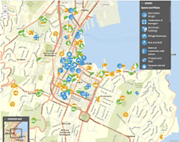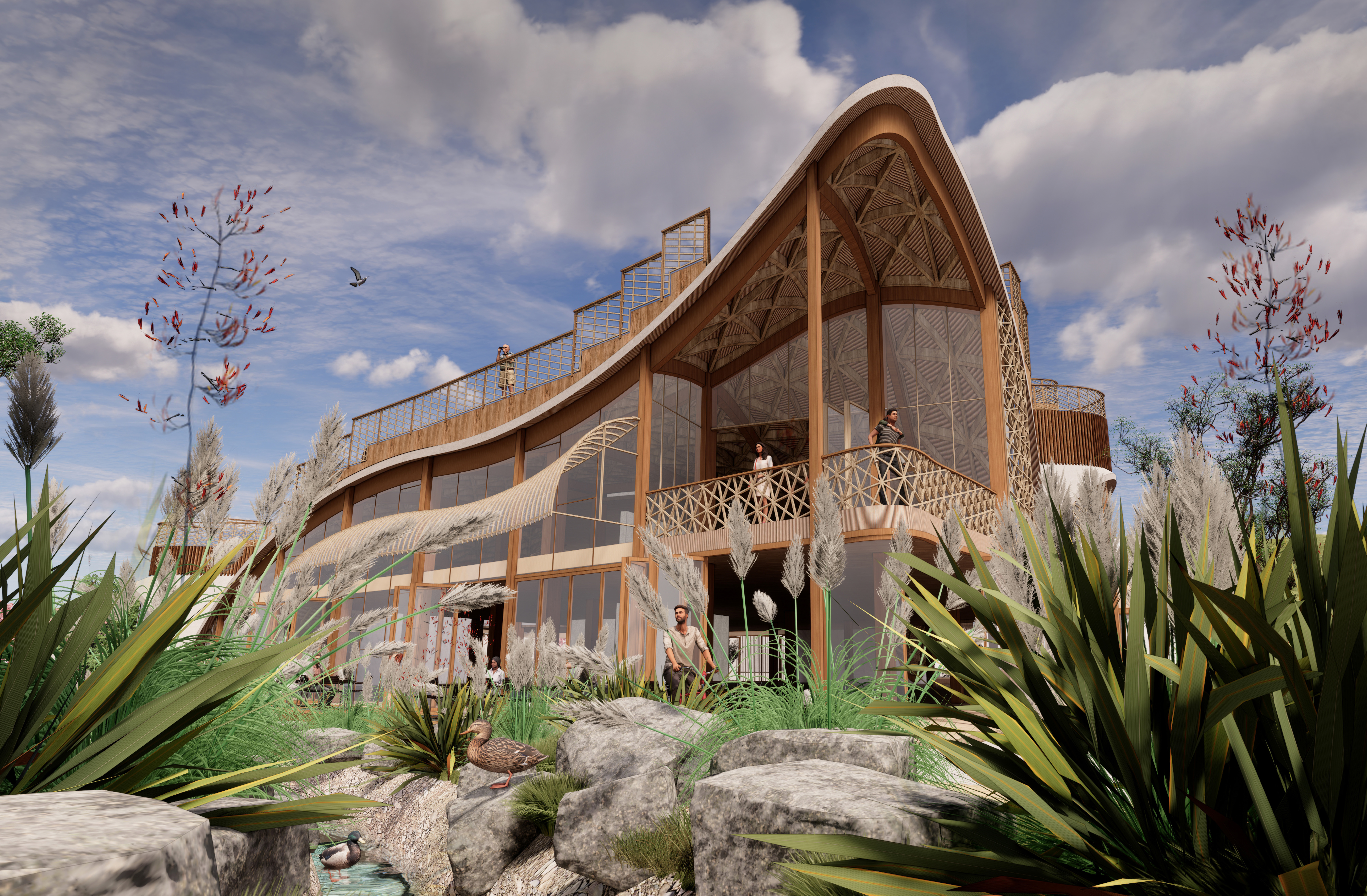Increasing evidence shows that creating and maintaining relationships with nature is important for human wellbeing. Humanity has become a mostly urbanised species where people typically spend most of their time indoors. It is important that strategies for deliberately bringing aspects of nature into architectural and urban spaces are explored. Design that responds to an understanding of people’s innate connection to the living world can be termed biophilic design.
More about Biophilic design and human-nature relationships: Understanding and designing nature experiences in cities: a framework for biophilic urbanism
Research Projects

The Wellington Nature in the City Map gives both locals and visitors a chance to celebrate and participate in the urban playground that incorporates the capital’s harbour, hills, coastline, and native flora and fauna. As well as biodiversity, it also shows aspects of the built environment and sculptures that have been inspired by the nature of the city. The Wellington Nature in the City map was a joint project between the Wellington City Council, Victoria University of Wellington’s School of Architecture, and Wellington Living Architecture group.
REDLab Biophilic design publications:
Journal articles and conference papers:
- Urgent biophilia: Green space visits in wellington, New Zealand, during the COVID-19 lockdowns
Land Vol.11, No. 793, 2022
MacKinnon, M.; MacKinnon, R.; Pedersen Zari, M.; Glensor, K.; Park, T. - Reconnecting children with nature: biophilic primary school learning environments
Zero Energy Mass Custom Home (ZEMCH) International Conference, Melbourne, Australia, 2018.
Woodward, E. & Pedersen Zari, M.
Theses:
- Paekawakawa’s Healing Corridor: An architectural approach to help the integration of immigrants in residential communities through biophilic-placemaking,
Master of Architecture thesis by Irina Macovei, 2023. - Towards restorative spaces for postnatal recovery in urban tertiary hospitals,
PhD thesis by Lateef Lawal, 2020. - A House for Trees,
Master of Architecture thesis by Hayley Miller, 2020. - A Place in Nowhere: Architectural Placemaking in the Tararua Ranges,
Master of Architecture thesis by Douglas Wright, 2020. - The Nature of Enticement,
Master of Architecture thesis by Molly Williams, 2018. - Reconnecting Children with Nature: Biophilic Junior Level Learning Environment Design,
Master of Architecture thesis by Emma Woodward, 2018. - Rainwater’s Well-come: Resettling Former Refugees into New Zealand,
Master of Architecture thesis by Lucy Stronach, 2017. - Interiority of a Disconnected Mind,
Master of Interior Architecture thesis by Sarah Cheetham, 2016 - Trasylum: Resting in the Mountain: Himalayan Refugee Border Conditions,
Master of Architecture thesis by Matthew Wadsworth, 2016.

Image by Irina Macovei
Pedersen Zari Biophilic design publications:
- Understanding and designing nature experiences in cities: a framework for biophilic urbanism
Cities and Health. Pg 1-11, 2019. - Biophilic urbanism: understanding and designing nature experiences in cities
Activating Biophilic Cities (ABC) International Conference, London, England, 2018. - What makes a city ‘biophilic’? Observations and experiences from the Wellington Nature Map project
In: Aurel, M. (ed.) Back to the future: The next 50 years, 51st International Conference of the Architectural Science Association. Wellington, New Zealand: The Architectural Science Association and Victoria University of Wellington. 2017.
Current Collaborators:
- Openings available as post-graduate students or interns.
Past Collaborators:
- Irina Macovei (Master of Architecture candidate, Te Herenga Waka Victoria University of Wellington)
- Rebecca MacKinnon (Master of Bio-inspired Design, Utrecht University)
- Lateef Lawal (PhD, Te Herenga Waka Victoria University of Wellington)
- Estelle Cruz (Civil Engineering, University of Centrale Lyon)
- Sarah Burns (Master of Architecture, Te Herenga Waka Victoria University of Wellington)
- Hayley Miller (Master of Architecture, Te Herenga Waka Victoria University of Wellington)
- Emma Woodward (Master of Architecture, Te Herenga Waka Victoria University of Wellington)
- Molly Williams (Master of Architecture, Te Herenga Waka Victoria University of Wellington)
- Douglas Wright (Master of Architecture, Te Herenga Waka Victoria University of Wellington)
- Lucy Stronach (Master of Architecture, Te Herenga Waka Victoria University of Wellington)
- Sarah Cheetham (Master of Interior Architecture, Te Herenga Waka Victoria University of Wellington)
- Matthew Wadsworth (Master of Architecture, Te Herenga Waka Victoria University of Wellington)